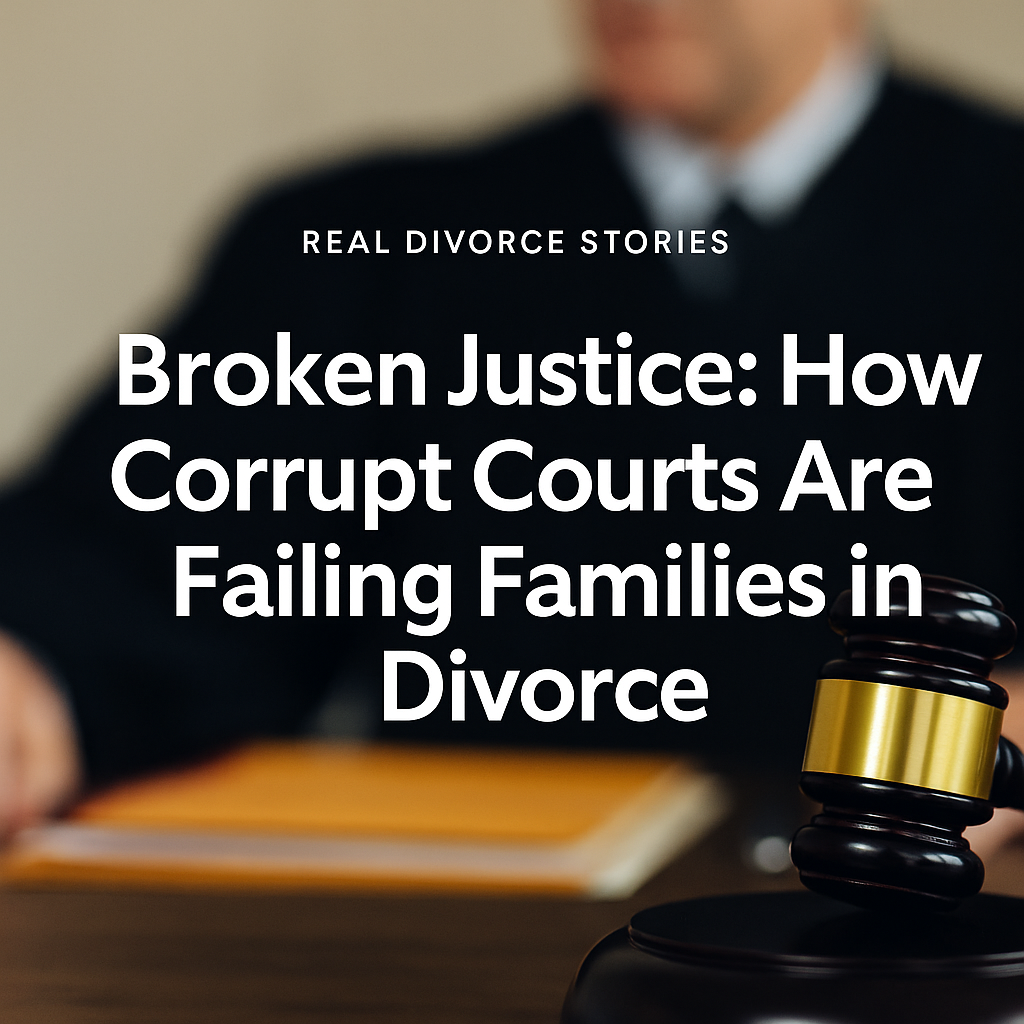
Where the Gavel Breaks Trust
The family court system is supposed to protect children, uphold fairness, and deliver justice. But across the U.S. and beyond, a disturbing number of divorce and custody cases reveal a court system crumbling under corruption, negligence, and systemic failure. This post unpacks the real-life consequences of courtroom injustice and why families are paying the highest price.
The Anatomy of Court Corruption
Judicial misconduct can take many forms:
- Favoritism: Some judges are accused of favoring certain attorneys or parties based on personal relationships or campaign contributions.
- Negligence: Cases delayed for years, critical evidence ignored, or children’s safety put at risk.
- Financial incentives: In some jurisdictions, revenue-generating child support rulings or guardianship appointments raise ethical red flags.
- Outright bribery: High-profile cases have exposed judges accepting money or gifts to manipulate outcomes.
One such scandal involved Brooklyn’s Justice Gerald Garson, who was convicted for taking bribes to influence rulings in divorce court. He’s just one of many who turned a bench of justice into a seat of profit.
How This Hurts Families
When corruption or incompetence enters the courtroom, families suffer deeply:
- Children placed in unsafe environments
- Protective parents lose custody or are silenced
- Self-represented litigants denied a fair voice
- Years of litigation drain emotional and financial reserves
Even more tragic, many parents leave court not only without justice, but with the trauma of having their children taken, silenced by gag orders, or financially ruined by biased judgments.
Global Examples of Judicial Failure
It’s not just a U.S. issue:
- Australia: Judge Salvatore Vasta wrongly jailed a father during a divorce hearing—a decision later found illegal, but Vasta faced no consequences due to judicial immunity.
- UK: A surge of complaints against the family court’s secretive operations and unchecked power has sparked calls for reform.
- Canada: Indigenous families report disproportionate removal of children by judges unfamiliar with cultural context.
Stories That Should Shock You
Parents have shared heartbreaking accounts:
- Judges dismissing credible abuse claims and awarding custody to abusers.
- Attorneys working behind closed doors with judges while parents are excluded.
- Children begging judges not to return to one parent, only to be ignored.
Why Is There So Little Oversight?
Judges often operate with near-total immunity. Judicial conduct boards—tasked with holding them accountable—rarely issue public discipline. Appeals are expensive, slow, and often inaccessible for families already overwhelmed.
What Can Be Done?
Reform starts with exposure, advocacy, and action:
- Transparency: Open family court proceedings (with safeguards for privacy).
- Independent oversight: External boards with power to remove corrupt or negligent judges.
- Accountability: Require judges to justify controversial rulings and subject them to regular reviews.
- Support for parents: Legal aid, education, and advocacy for those navigating the system alone.
What You Can Do if You’re Affected
- Document everything: Keep detailed records of hearings, rulings, and communications.
- File complaints: Judicial conduct boards exist in every state—even if results vary.
- Go public: Media, blogs, or social platforms can amplify your story.
- Support others: Connect with other parents through advocacy groups or shared platforms.
You’re Not Alone
If you’ve been through a custody or divorce case that felt like anything but justice, your voice matters. Sharing your experience could help drive reform and support others in similar battles.
📢 Have your own divorce or courtroom story to share? Submit it here
